Richard Meier adds a sleek new addition to Tel Aviv’s White City

In Tel Aviv’s White City, a blanket of Bauhaus buildings unrolls across the neighbourhood like a pure, geometric, architectural picnic. And now, Richard Meier & Partners has added a sleek new addition to the UNESCO World Heritage Site – the practice’s first international residential tower and first project in Israel.
From the 1930s, the area was populated with white modernist blocks, designed by German Jewish architects who had escaped Germany during the Nazi occupation and settled in Israel. Meier’s new building was designed with this specific urban context in mind: ‘The design of the buildings in the White City made a deep impression on me when I visited Israel many years ago,’ Meier explains. ‘So to work in this context has been an aspiration of mine for a long time.’
Following Bauhaus design principles, the concrete building has a modular rectilinear emphasis, with a glazed façade layered with an aluminium gridded louvered screen. Described as a ‘veil’, the screen provides a graceful layer of protection to the apartments, a concept that was inspired by traditional Middle Eastern clothing.
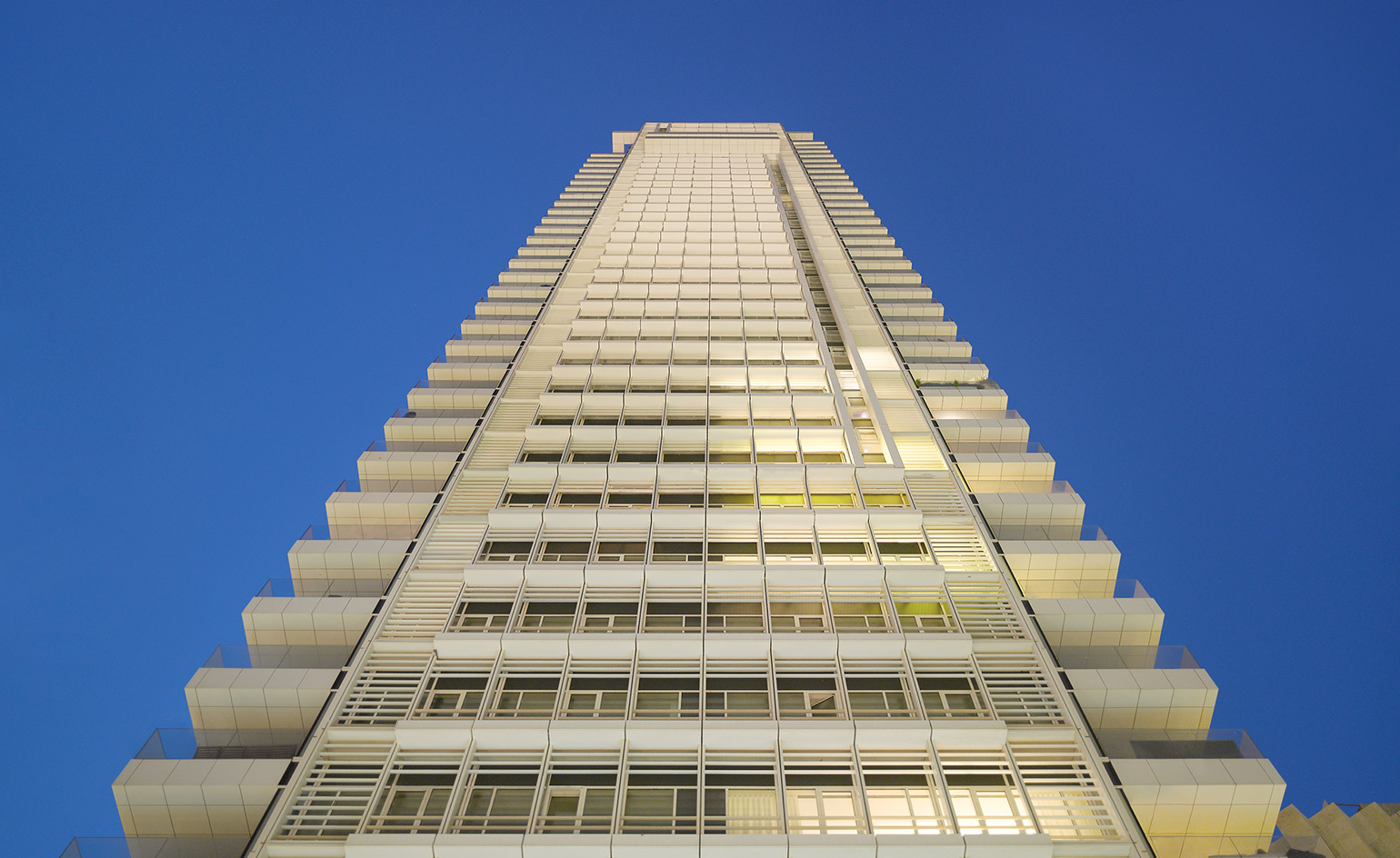
The balconies and the louver frame system create an architectural buffer between public and private spaces
Sitting at the prominent intersection of Rothschild Boulevard and Allenby Street, the 154m high tower – with 42 levels above ground – brings a new sense of scale to the low- to mid-rise district, but the colour and lightness of the louvered façade allow a cordial conversation with the neighbouring buildings. At street level, retail spaces are left open and transparent to reduce the upper mass of the tower, which rests on slim piloti.
With service space at the core of the building, large window frames at the outer perimeter of the volume prioritise light and views into the open-plan apartments where the sliding louver blinds can be adjusted, forming a privacy buffer to the city.
‘It is my hope that inviting the timeless quality of this city’s light and views into an open layout for the residences, a design we haven’t seen much here, will bring together the existing elements with a fresh perspective,’ says Meier.

The tower holds 147 apartments, retail spaces and amenities including a pool, spa, wine cellar and lounges
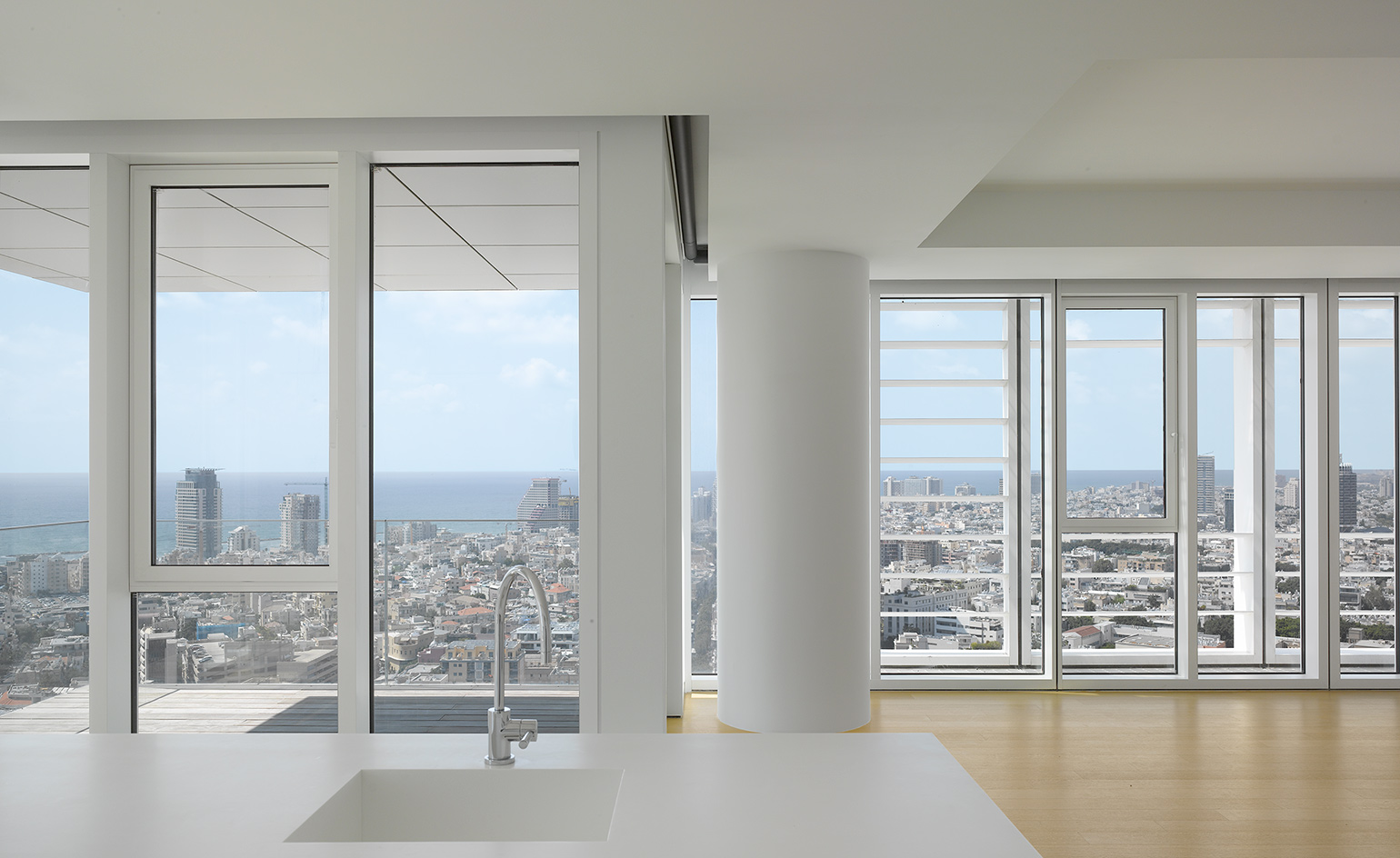
Large window frames prioritise light and views into the open-plan apartments, where the sliding louver blinds can be adjusted

The aluminium gridded louvered screen provides a layer of protection to the glazed façade
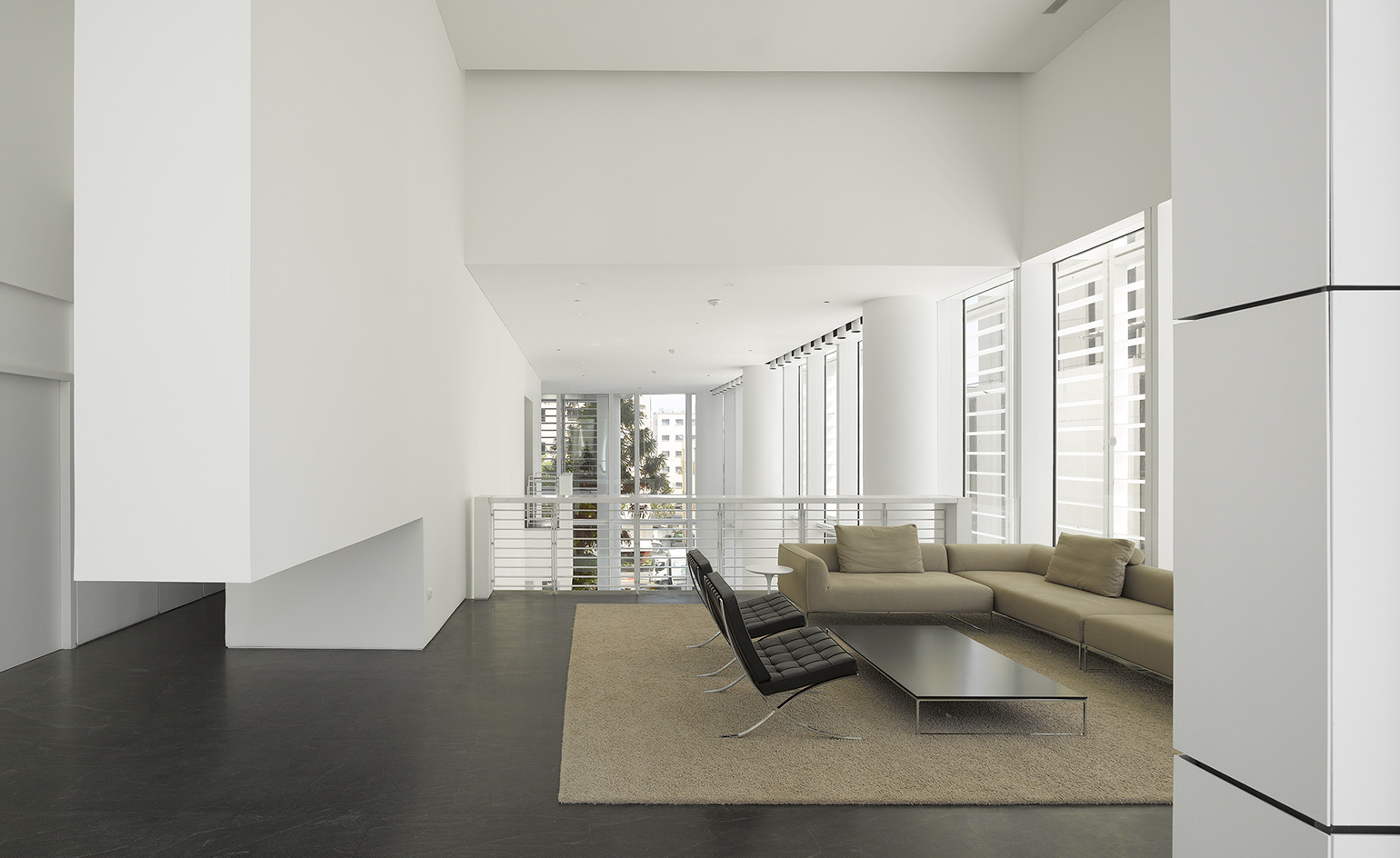
The apartments have spacious open-plan interiors
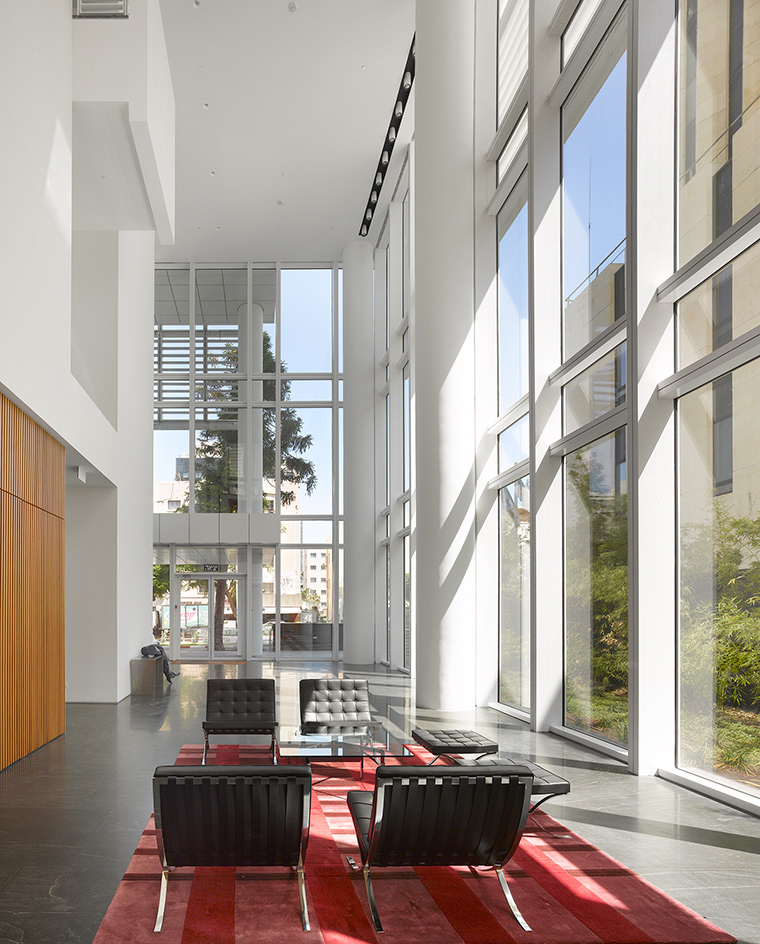
The penthouse apartments feature double height windows
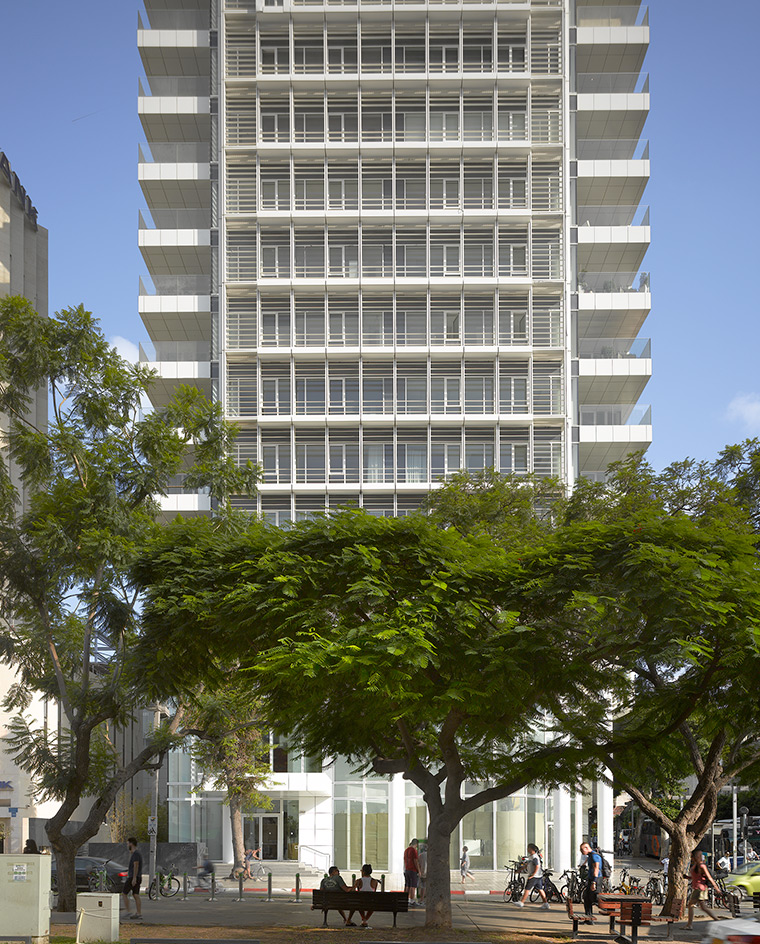
At street level, retail spaces are left open and transparent to reduce the upper mass of the tower, which rests on slim piloti
INFORMATION
For more information, visit the Richard Meier & Partners website
Receive our daily digest of inspiration, escapism and design stories from around the world direct to your inbox.
Harriet Thorpe is a writer, journalist and editor covering architecture, design and culture, with particular interest in sustainability, 20th-century architecture and community. After studying History of Art at the School of Oriental and African Studies (SOAS) and Journalism at City University in London, she developed her interest in architecture working at Wallpaper* magazine and today contributes to Wallpaper*, The World of Interiors and Icon magazine, amongst other titles. She is author of The Sustainable City (2022, Hoxton Mini Press), a book about sustainable architecture in London, and the Modern Cambridge Map (2023, Blue Crow Media), a map of 20th-century architecture in Cambridge, the city where she grew up.
-
 Sculptor Woody De Othello paints a Miami museum red for a show that ‘almost hugs you’
Sculptor Woody De Othello paints a Miami museum red for a show that ‘almost hugs you’The Miami-born, California-based artist opens his first museum exhibition in his hometown as an experiential journey through life and lifeless objects
-
 Alpine A390 GT: French, fast and fun. A sporting EV with a real sense of occasion
Alpine A390 GT: French, fast and fun. A sporting EV with a real sense of occasionAlpine doubles down on its fast electric credentials with the A390 GT, the French performance brand’s largest car to date
-
 Forget smart homes, Doma's 'intelligent' doors open at the sight of a familiar face
Forget smart homes, Doma's 'intelligent' doors open at the sight of a familiar faceYves Béhar and Jason Johnson have founded Doma, a tech start-up dedicated to seamlessly integrating tech into your daily life
-
 The Architecture Edit: Wallpaper’s houses of the month
The Architecture Edit: Wallpaper’s houses of the monthFrom wineries-turned-music studios to fire-resistant holiday homes, these are the properties that have most impressed the Wallpaper* editors this month
-
 This modernist home, designed by a disciple of Le Corbusier, is on the market
This modernist home, designed by a disciple of Le Corbusier, is on the marketAndré Wogenscky was a long-time collaborator and chief assistant of Le Corbusier; he built this home, a case study for post-war modernism, in 1957
-
 From Bauhaus to outhouse: Walter Gropius’ Massachusetts home seeks a design for a new public toilet
From Bauhaus to outhouse: Walter Gropius’ Massachusetts home seeks a design for a new public toiletFor years, visitors to the Gropius House had to contend with an outdoor porta loo. A new architecture competition is betting the design community is flush with solutions
-
 Louis Kahn, the modernist architect and the man behind the myth
Louis Kahn, the modernist architect and the man behind the mythWe chart the life and work of Louis Kahn, one of the 20th century’s most prominent modernists and a revered professional; yet his personal life meant he was also an architectural enigma
-
 The Architecture Edit: Wallpaper’s houses of the month
The Architecture Edit: Wallpaper’s houses of the monthFrom Malibu beach pads to cosy cabins blanketed in snow, Wallpaper* has featured some incredible homes this month. We profile our favourites below
-
 Three lesser-known Danish modernist houses track the country’s 20th-century architecture
Three lesser-known Danish modernist houses track the country’s 20th-century architectureWe visit three Danish modernist houses with writer, curator and architecture historian Adam Štěch, a delve into lower-profile examples of the country’s rich 20th-century legacy
-
 The Architecture Edit: Wallpaper’s houses of the month
The Architecture Edit: Wallpaper’s houses of the monthThis September, Wallpaper highlighted a striking mix of architecture – from iconic modernist homes newly up for sale to the dramatic transformation of a crumbling Scottish cottage. These are the projects that caught our eye
-
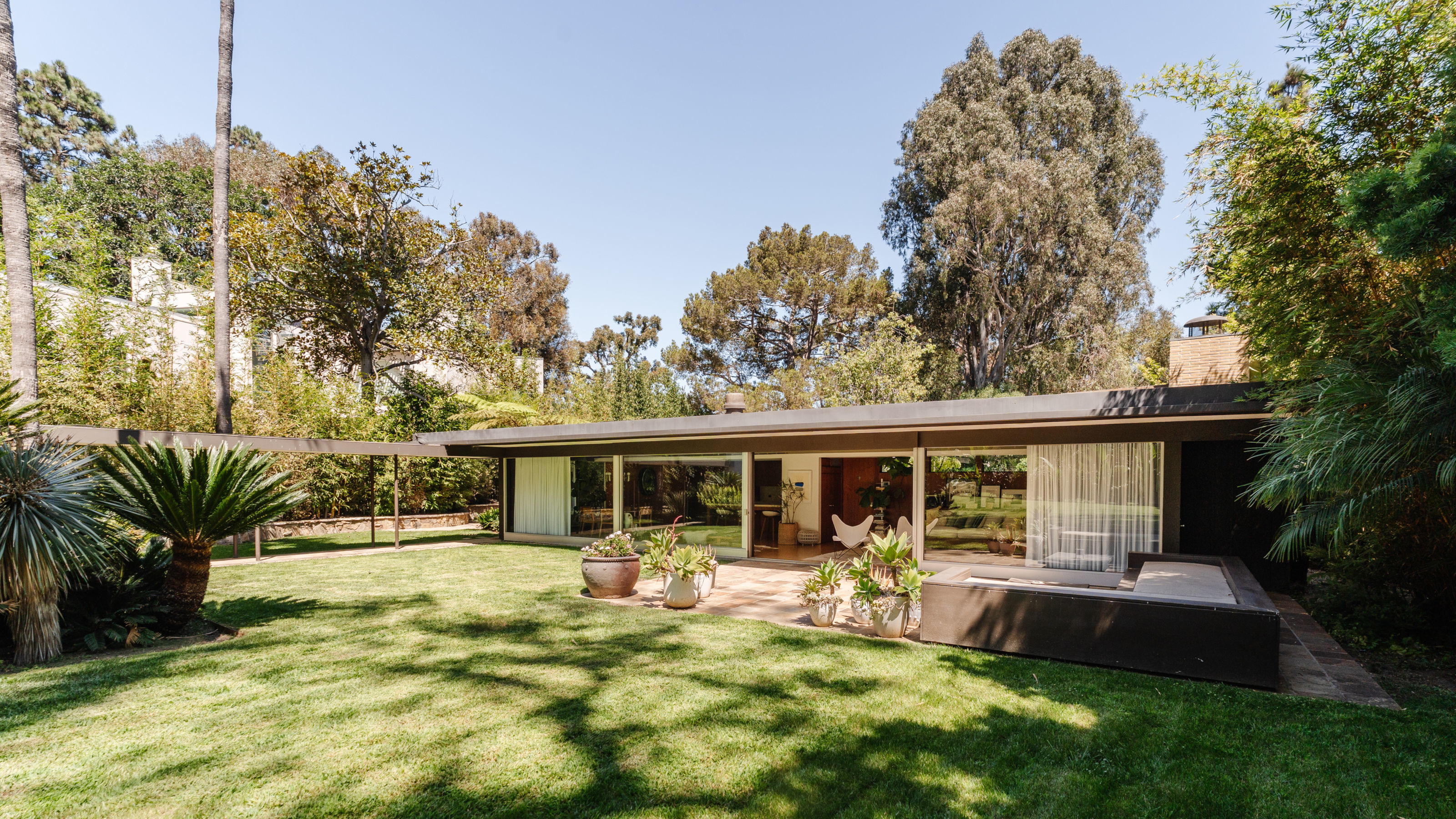 Richard Neutra's Case Study House #20, an icon of Californian modernism, is for sale
Richard Neutra's Case Study House #20, an icon of Californian modernism, is for salePerched high up in the Pacific Palisades, a 1948 house designed by Richard Neutra for Dr Bailey is back on the market